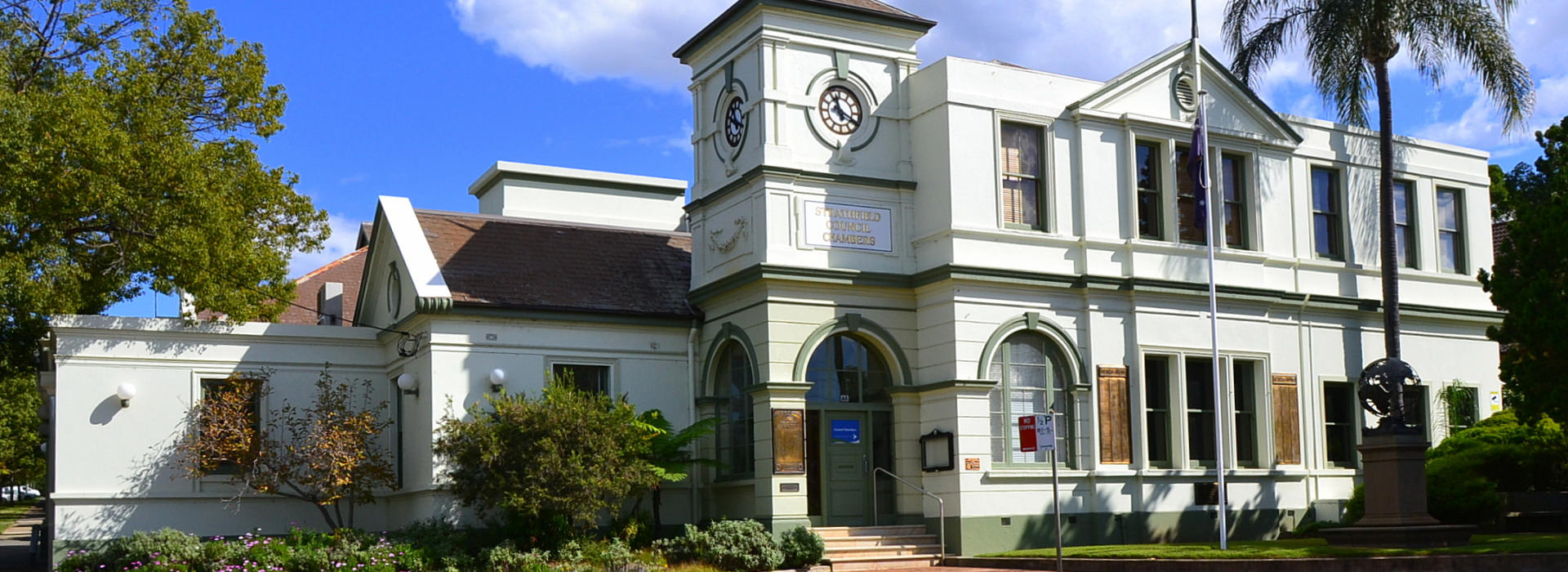What is Asbestos?
Asbestos is a dangerous substance and laws govern the collection, removal, transportation, storage and disposal of asbestos waste. There is no safe exposure level of asbestos.
Asbestos was used extensively in the building and construction industry in New South Wales until 1986. Many buildings built in Strathfield Local Government Area before 1987 may contain asbestos.
Asbestos fibres can easily become airborne if disturbed, and if they are inhaled, they can cause a variety of life-threatening diseases, including asbestosis (scarring of the lung tissue) and mesothelioma (cancer of the pleural lining).
If you are planning works to your home or property and your property was built prior to 1987, you should carefully consider asbestos issues. This section of the Council website provides information and advice on dealing with asbestos.
Where Can I Find Asbestos?
- Corrugated roofing
- Wall cladding (internal and external)
- Guttering
- Downpipes
- Thermal insulation
- Electricity and gas meter boxes
- Vinyl – asbestos floor tiles
- Asbestos insulated wiring; and
- Fibro sheet fencing
Types of Asbestos
There are two (2) types of material used in housing construction that contain asbestos:
- Bonded (Tightly Bound) Asbestos – Bonded materials containing asbestos are the most common in domestic houses. They are mainly made up of a bonding compound (such as cement) with up to 15% asbestos. Bonded materials containing asbestos are solid, quite rigid and the asbestos fibres are tightly bound in the material. They are commonly referred to as ‘fibro’, ‘asbestos cement’ and ‘AC sheeting’.
- Loosely Bound (Friable) Asbestos – These are not commonly found in domestic houses. They were primarily used in commercial and industrial settings for fire proofing, sound proofing and insulation. They can be found in some old domestic heaters, stoves, hot water systems and associated pipe lagging and in the backing of vinyl and linoleum floor coverings.
What Should You Do If You Find Asbestos?
- Anyone who removes, repairs or disturbs bonded or a friable asbestos material must hold a current removal licence from Workcover NSW holding either a Friable (Class A) or a Non- Friable (Class B) Asbestos Removal License which ever applies and a current WorkCover Demolition License where works involve demolition. To find a licensed asbestos removalist please see WorkCover.
- Removal of asbestos by a person who does not hold a Class A or Class B asbestos removal license is permitted if the asbestos being removed is 10m2 or less of non-friable asbestos (approximately the size of a small bathroom). Friable asbestos materials must only be removed by a person who holds a current Class A asbestos license.
- Before starting work, a work site-specific permit approving each asbestos project must be obtained from Workcover NSW. A permit will not be granted without a current Workcover licence. All removal, repair or disturbance of or to asbestos material must comply with the following:
- Work Health and Safety Act 2017;
- Work Health and Safety Regulation 2017;
- How to Safety Remove Asbestos Code of Practice – WorkCover 2011; and
- Safe Work Australia Model Code of Practice: How to manage and control asbestos in the workplace 2018.
- Following completion of asbestos removal works undertaken by a licensed asbestos removalist re-occupation of a workplace must not occur until an independent and suitably licensed asbestos removalist undertakes a clearance inspection and issues a clearance certificate.
- The developer or demolition contractor must notify adjoining residents at least two (2) working days (i.e. Monday to Friday exclusive of public holidays) prior to the commencement of asbestos removal works. Notification is to include, at a minimum:
- the date and time when asbestos removal works will commence;
- the name, address and business hours contact telephone number of the demolisher, contractor and/or developer;
- the full name and license number of the asbestos removalist/s; and
- the telephone number of WorkCover’s Hotline 13 10 50
- warning signs informing all people nearby that asbestos removal work is taking place in the area. Signs should be placed at all of the main entry points to the asbestos removal work area where asbestos is present. These signs should be weatherproof, constructed of light-weight material and adequately secured so they remain in prominent locations. The signs should be in accordance with AS 1319-1994 Safety signs for the occupational environment for size, illumination, location and maintenance; and
- appropriate barricades installed as appropriate to prevent public access and prevent the escape of asbestos fibres. Barricades must be installed prior to the commencement of asbestos removal works and remain in place until works are completed.


